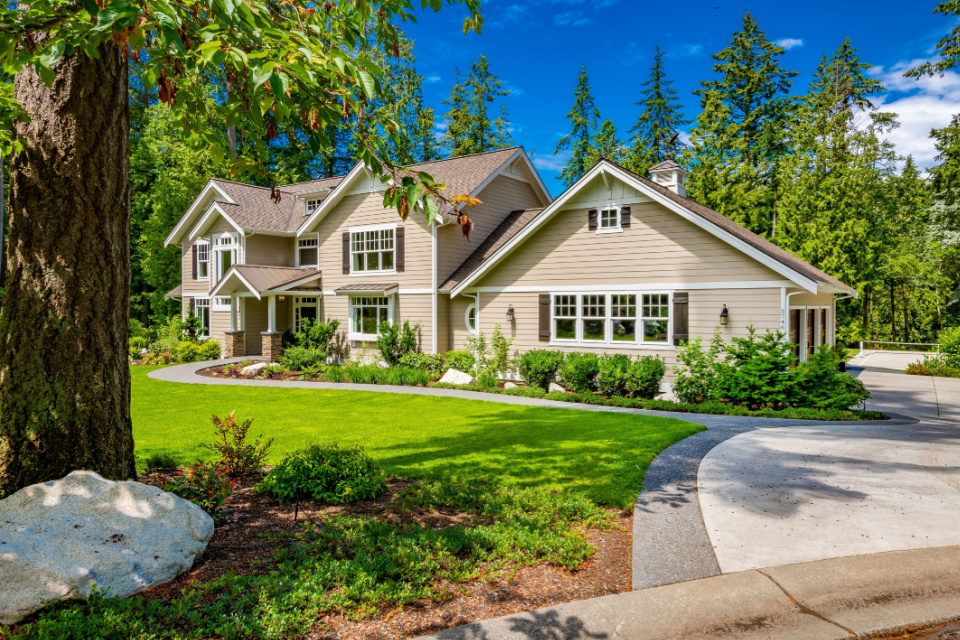
Elements of house design
06/14/2023
Common residential architectural styles in Australia
07/25/2023Terrace gardens are a perfect way to add greenery to urban spaces where space is at a premium.
In addition to their aesthetic appeal, terrace gardens have ecological and social benefits. The provision of personal private outdoor space for each house assists in ensuring privacy, while also providing an area that can be utilized for gardening. To create an eye-catching terrace garden, one can combine different elements of design such as romantic styles and elegant features that perfectly blend with the surrounding natural environment and complement the home’s overall aesthetic. However, it is important to keep in mind that the benefits of terrace gardens depend on the appropriate gardening methods used by households.
One such method is rooftop gardening, which offers multifaceted benefits for both the environment and buildings themselves.Architects and sustainable building professionals greatly promote rooftop gardens for their heat insulating value to buildings. In fact, there have been numerous studies available in literature from different parts of the world that focus on various environmental benefits resulting from terrace garden construction. One potential issue for terrace gardens is limited space, but it can be addressed through the use of containers or pots. Another way to make the most of space is to use vertical gardening techniques. Terrace gardens can be designed in various ways, including hanging gardens or formal green roofs. The hanging gardens of Babylon by King Nebuchadnezzar are known as one of the seven wonders from the ancient world and terrace gardens have been a customary element of modern cities worldwide. Terrace gardens not only enhance the aesthetic value of homes, but also have important ecological and social benefits. Moreover, roof gardens create a natural cooling effect on buildings, reducing the heat load and improving energy efficiency. It is worth noting that the benefits of terrace gardens extend beyond individual households. The overall environmental benefits of terrace gardens are significant, including improving air and water quality, reducing carbon emissions in urban areas, and increasing biodiversity. In addition to the environmental benefits, terrace gardens also have important psychological and social advantages for urban dwellers. For example, terrace gardening offers city residents the opportunity to connect with nature and engage in outdoor activities that foster physical and mental well-being. In conclusion, terrace gardens provide a unique opportunity for households to create an oasis of greenery and nature in urban areas. Through the use of various gardening techniques, terrace gardens can provide numerous benefits for both individuals and the environment. Moreover, given the growing concern of city-dwellers for safe and nutritious food, terrace gardening is gaining importance as a source of ecosystem-friendly fresh produce that can be enjoyed by families and shared with the community.
So how should the terrace of the double-storey villa be designed?
The design of a terrace garden depends on various factors, including the available space and personal preferences of the homeowner. In the case of a double-storey villa, it is important to consider both the lower and upper levels of the terrace.Vertical gardening techniques can be used to maximize space, including the use of hanging gardens or green walls. These techniques can also help to create a visually appealing and cohesive design for the entire terrace. In addition, the selection of plants should also be carefully considered based on factors such as their sun and shade requirements, growth habits, and ability to toleratevarious environmental conditions. Consider incorporating a variety of plants, such as annuals, perennials, shrubs and trees to create a diverse ecosystem that supports local biodiversity.
So how should the terrace of the double-storey villa be designed?
The design of a terrace garden depends on various factors, including the available space and personal preferences of the homeowner. In the case of a double-storey villa, it is important to consider both the lower and upper levels of the terrace.Vertical gardening techniques can be used to maximize space, including the use of hanging gardens or green walls. These techniques can also help to create a visually appealing and cohesive design for the entire terrace. In addition, the selection of plants should also be carefully considered based on factors such as their sun and shade requirements, growth habits, and ability to toleratevarious environmental conditions. Consider incorporating a variety of plants, such as annuals, perennials, shrubs and trees to create a diverse ecosystem that supports local biodiversity.
Furthermore, the terrace should also be designed to promote energy efficiency and sustainability. This can be achieved by installing green roofs or using materials that have high insulating properties to reduce energy consumption and increase the lifespan of the roof.
Overall, a well-designed terrace garden can enhance the aesthetics and functionality of your home while promoting environmental sustainability and social well-being. Therefore, homeowners should carefully consider their options and work with experienced garden designers to create a terrace that meets their needs and preferences while having a positive impact on the local ecosystem and community. Furthermore, terrace gardens can provide numerous psychological benefits for homeowners and communities. Terrace gardens can serve as a place of retreat and relaxation, providing an escape from the stresses of urban life. Terrace gardens have also been shown to enhance cognitive performance, reduce stress and promote overall well-being.




